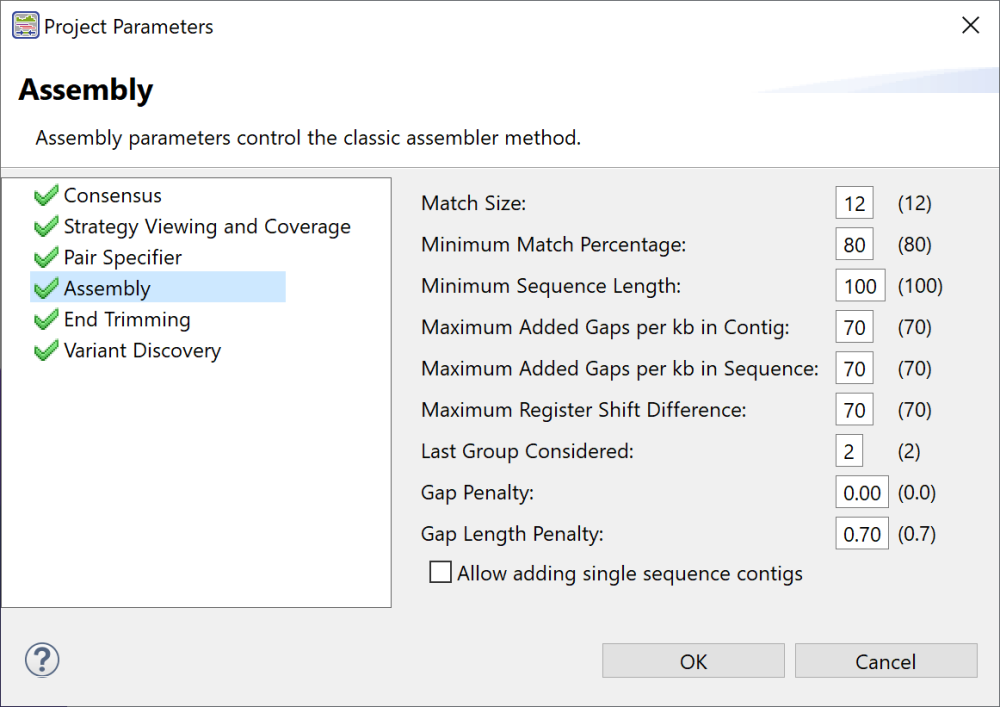Assembling parameters determine how read sequences are combined to form contigs during assembly in SeqMan Ultra.
To access the dialog, use Project > Project Parameters and click Assembly on the left.

Default values are shown to the right of the text boxes where you can enter custom values.
- Match Size – the smallest number of matching consecutive bases required to extend comparisons between the new sequence and a contig or between two sequences.
- Minimum Match Percentage – the minimum % of matches in an overlap required to join two sequences in the same contig. (Default is 80%)
- Minimum Sequence Length – the threshold length of sequence that qualifies for addition to the assembly. If sequences are first trimmed for vector and/or quality, Minimum Sequence Length refers to the remaining length of the trimmed sequences. If you want to include in the assembly sequences smaller than the default value, simply enter a smaller number here. However, note that this value should be no less than the Match Size value specified above.
- Maximum Added Gaps per kb in Contig – the maximum number of gaps that can be added to a contig while merging with a new sequence. If a new sequence requires that a longer gap be inserted in the contig, the new sequence is not allowed to merge. It will be checked against any other contigs before being considered for a new contig.
- Maximum Added Gaps per kb in Sequence – the maximum number of gaps that can be added to a new sequence while merging with an existing contig. If a sequence requires a longer gap in order to be inserted in the contig, the new sequence is not allowed to merge. It will be checked against any other contigs before being considered for a new contig.
- Maximum Register Shift Difference – the maximum separation, in bases, between nearby matches.
- Lastgroup Considered – the maximum number of alignment groups SeqMan Pro investigates to see where a new sequence aligns with a contig. This must be set to one or higher. Alignment groups are groups of identical matches likely derived from the same region of a sequence.
- Gap Penalty – the penalty to be deducted from the pairwise score for each alignment for every gap introduced into either strand. Each gap incurs the same penalty regardless of its length. A high gap penalty suppresses gapping while a low value promotes gapping.
- Gap Length Penalty – the penalty assessed to gaps in the pairwise alignment step. This value deters long gaps by making them more costly than shorter gaps, proportional to their length. If it doesn’t matter to you how long gaps are, this value can be set to zero.
- Decide whether or not to check the box to Allow adding single-sequence contigs.
Need more help with this?
Contact DNASTAR


